PROTECT YOUR DNA WITH QUANTUM TECHNOLOGY
Orgo-Life the new way to the future Advertising by AdpathwayClivia is a genus of decorative, flowering perennials in the amaryllis family. Like other plants in this family, they make wonderful houseplants and can thrive outdoors in warm climates or as potted plants. Just don’t forget to bring them in for the winter.
Winter is their time to shine, as they bloom in time to brighten up the coldest time of the year. Their light and temperature needs are well suited to the indoors or to outdoor areas with access to indirect light.
If you garden in tropical or otherwise frost-free climates, you can put these beauties directly in the garden. They are certain to impress with their bold and brilliant blooms that show up just in time to brighten up the chilly winter months. Let’s dig in!
Clivia Overview

|
Plant Type Evergreen Perennial Family Amaryllidaceae Genus Clivia Species 6 |
Native Area Southern Africa Exposure Bright indirect light Height Up to 7’ Watering Requirements Moderate |
Pests & Diseases Root rot, scale mealybugs Maintenance Low Soil Type Loose, rich, well-draining Hardiness Zone 9-11 |
What Is It?
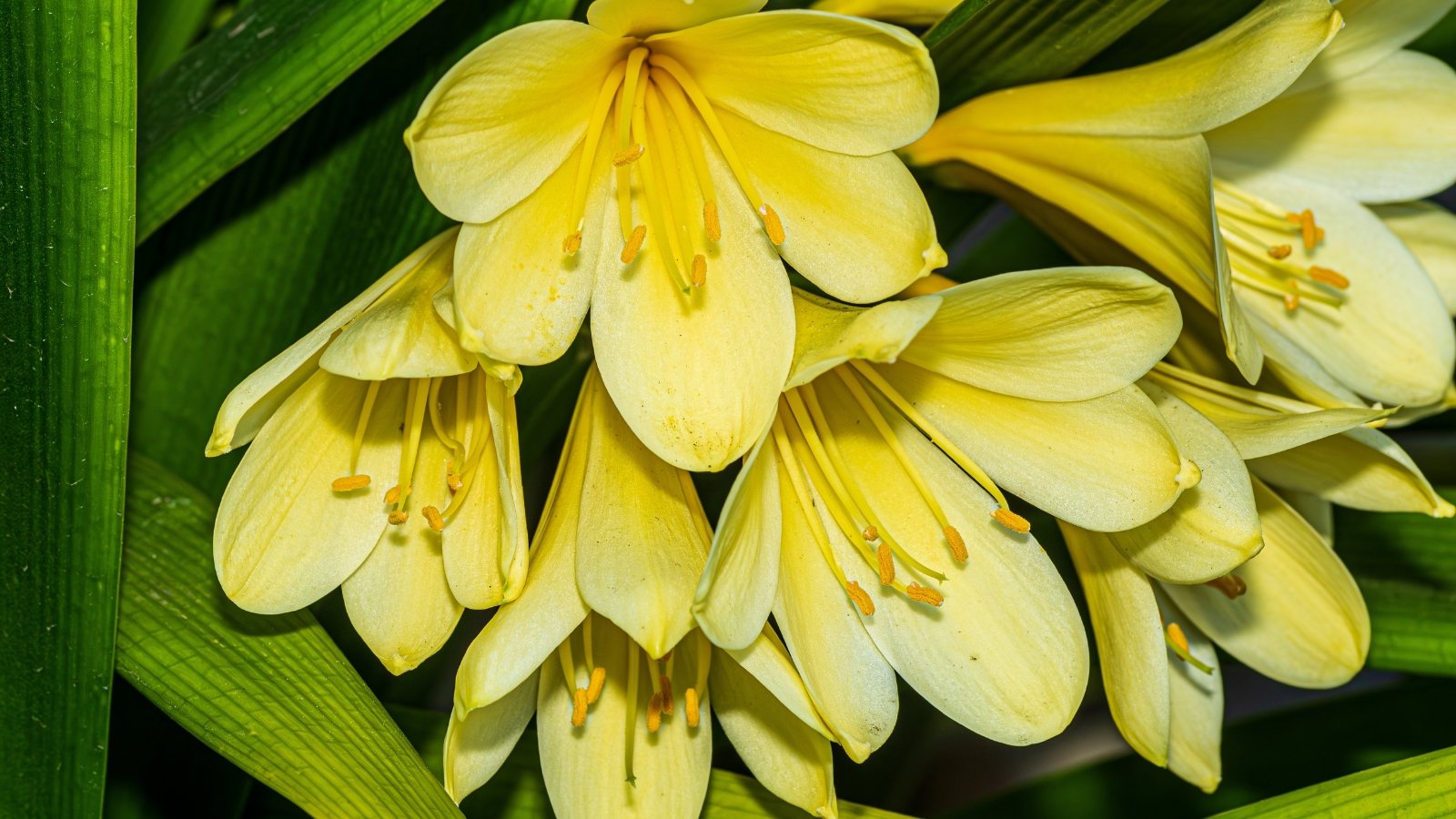 Clivias are warm-climate plants first introduced to England, popular for easy propagation and beautiful flowers.
Clivias are warm-climate plants first introduced to England, popular for easy propagation and beautiful flowers.Clivias are warm-climate plants first introduced in England in the early 1800s. They get their name from the lovely Duchess Charlotte Clive of Northumberland, born in Florence, Italy, who acted as governess to the future Queen Victoria.
Charlotte was an avid plant collector and is credited with being the first person in Great Britain to cultivate this plant to flower. In 1828, the Kew botanist John Lindley named the genus in her honor. In 1854, a flowering specimen of C. minute went on display at a meeting of the London Horticultural Society, where it made quite a splash.
It went on to become a popular and loved houseplant throughout Europe in the 1800s. Its ability to readily make offsets contributed to its success as a houseplant. It is easy to propagate and share and remains a popular ornamental to this day!
Characteristics
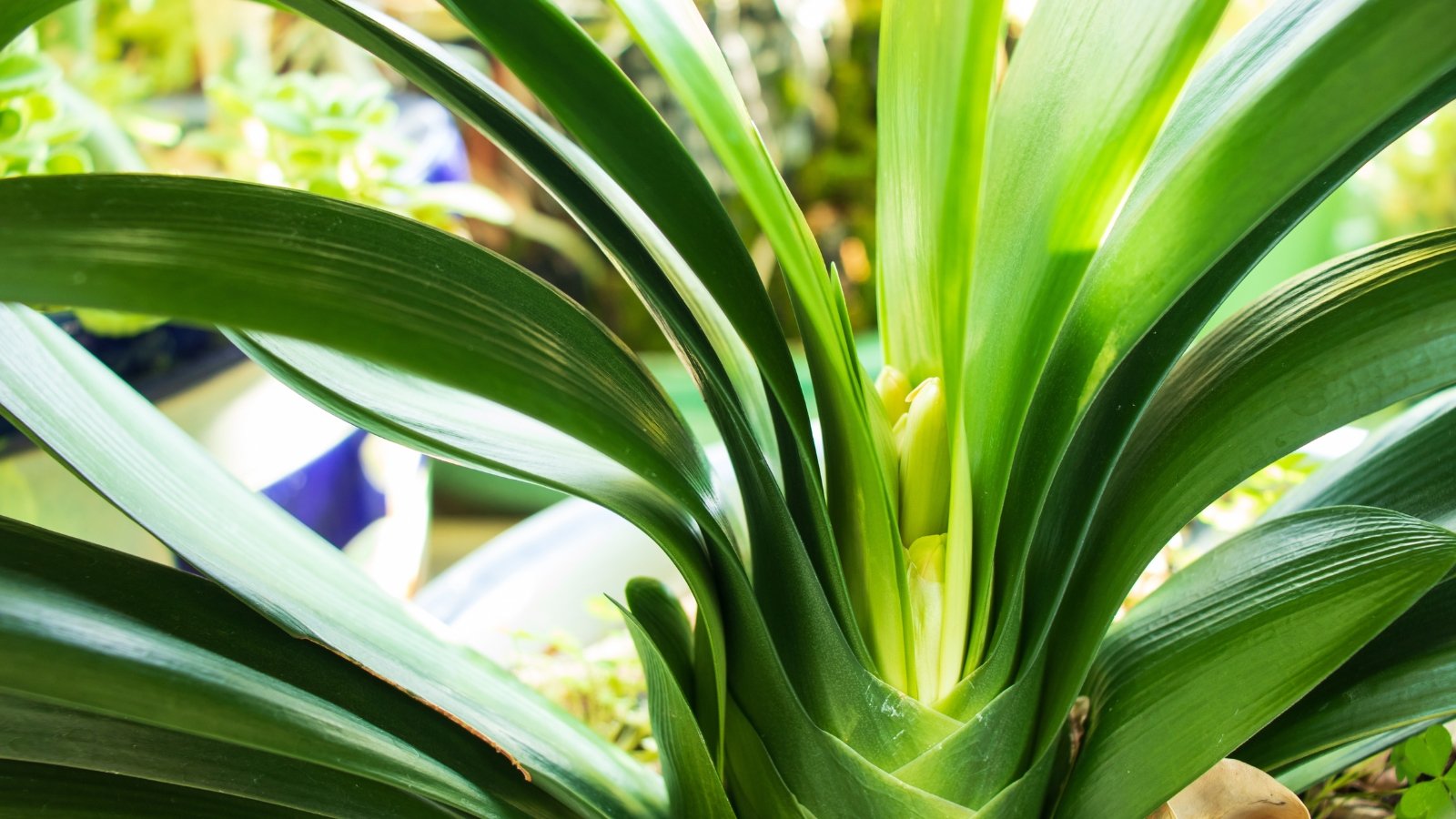 These perennials grow from thick rhizomes, producing fleshy roots, long strap-like leaves, and vibrant flowers.
These perennials grow from thick rhizomes, producing fleshy roots, long strap-like leaves, and vibrant flowers.Clivias are rhizomatic perennial evergreens. They grow from an underground rhizome that is roughly one inch thick and produces fleshy roots. They produce offsets regularly, colonizing well. You can divide them to propagate, as well. They also produce seeds in small, red fruits.
The rhizome produces central stems with long, flat, straplike leaves on either side. The leaves lie close to the ground and grow to about a foot to 18 inches long. When no flowers are present, the plant resembles an amaryllis, except that the leaves are narrower. The two are similar in most ways.
The bloom time is anywhere from mid-fall to mid-spring, depending on the climate. One root produces one stem and one flower cluster at the top. The cluster is umbel-shaped with tubular blooms that typically hand at different angles, often toward the ground. The blooms are most often orange, though they can also be yellow. As the rhizome grows and produces offsets, more stems pop up and, thus, more flowers. Over the span of several years, this gives the appearance of a larger plant which is actually many smaller ones.

Native Area
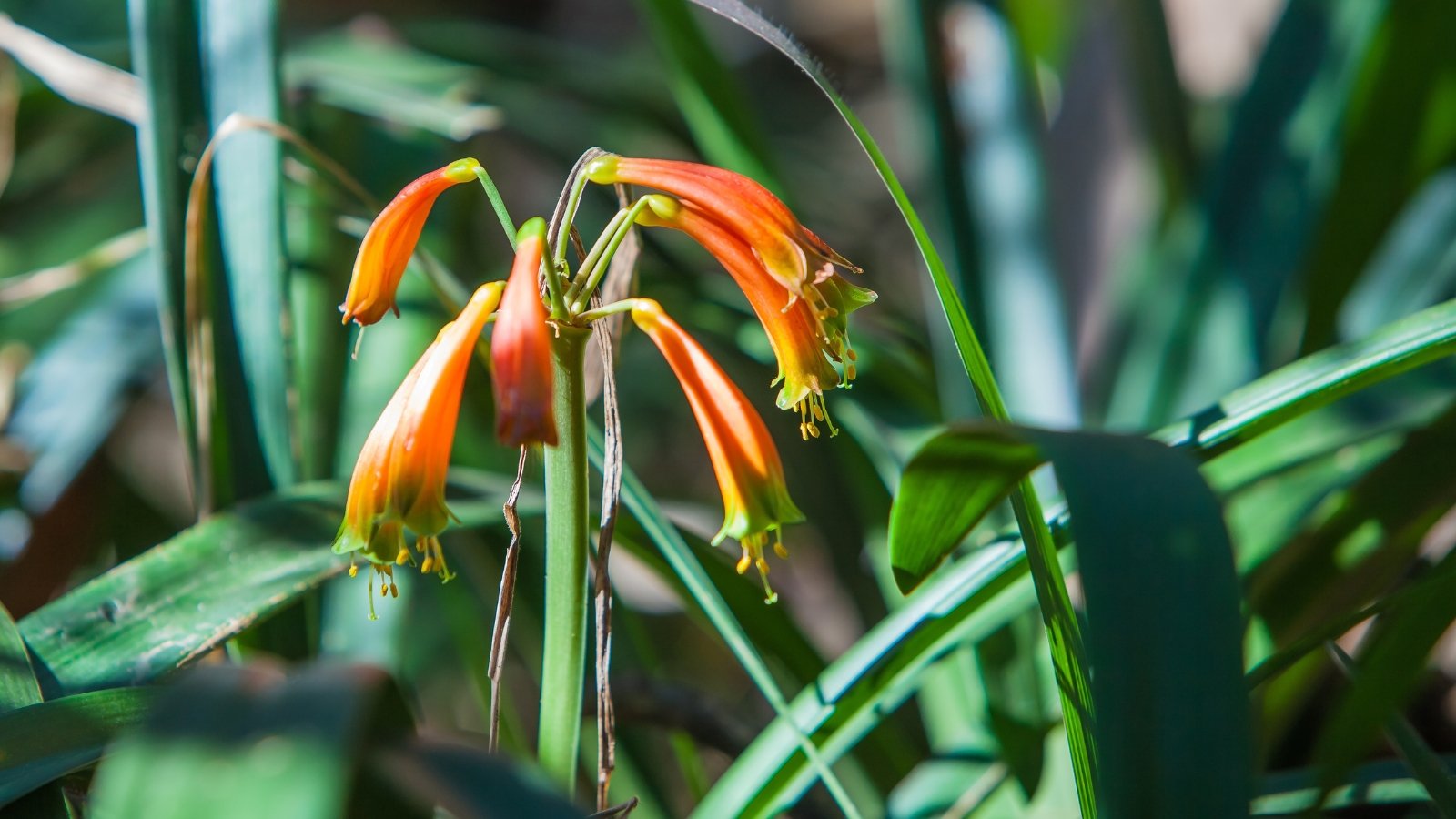 Clivia plants naturally grow in South Africa’s tropical woodland understory with moist, rich soil and dappled light.
Clivia plants naturally grow in South Africa’s tropical woodland understory with moist, rich soil and dappled light.Clivia plants are native to the tropical woodland understory of South Africa, including Estwatini, KwaZulu, Mpumalanga, and the Eastern Cape. They grow in areas with moist, rich soil and dappled light through the canopy overhead.
Planting
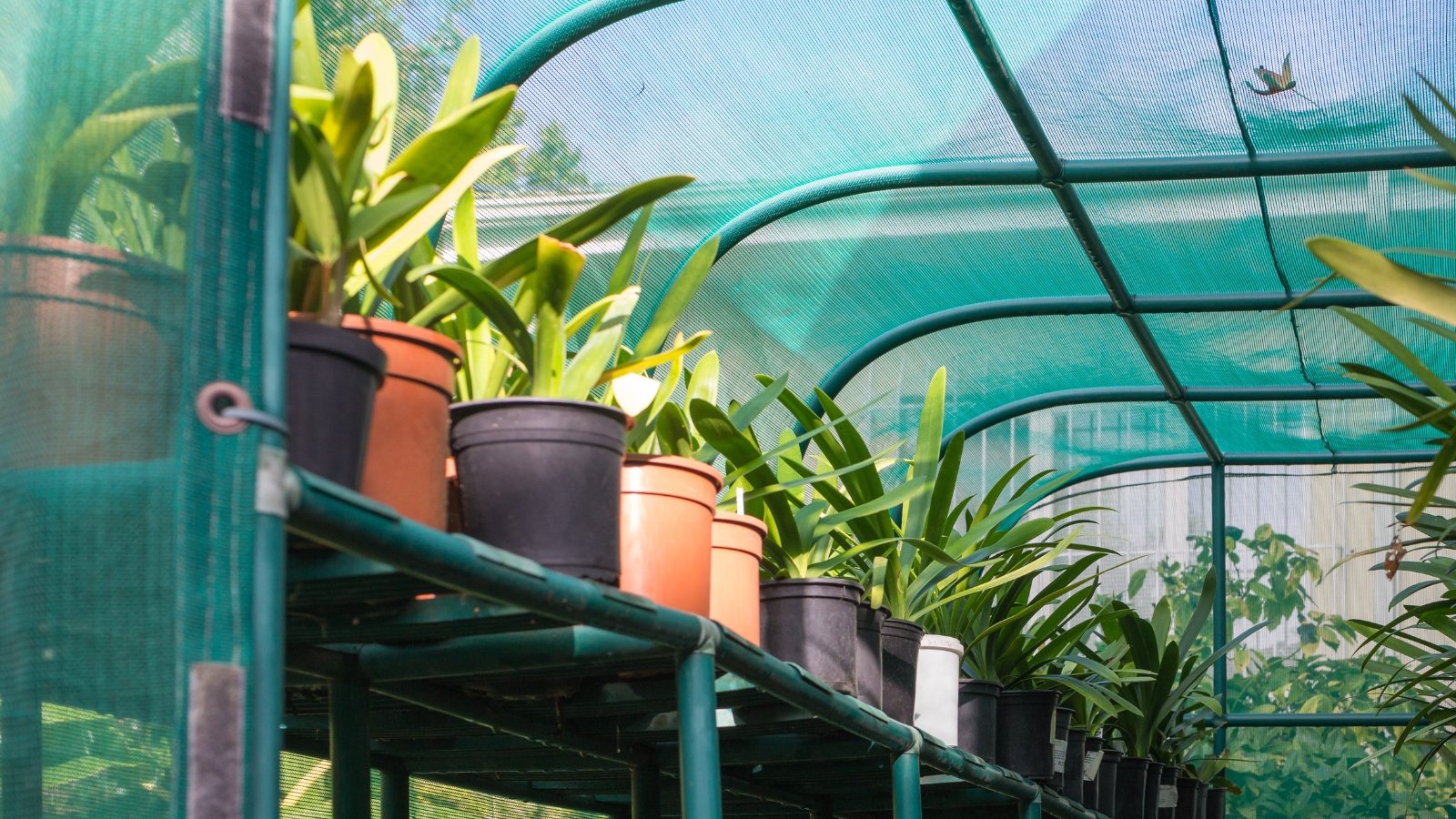 Clivias thrive as houseplants since they’re frost-sensitive and need protection in colder, frost-prone zones.
Clivias thrive as houseplants since they’re frost-sensitive and need protection in colder, frost-prone zones.Clivias are warm climate plants, so most often, you will see them as houseplants. They do not tolerate frost, so only gardeners in frost-free zones can grow them in the ground. They can grow as potted outdoor plants during the warmer months as long as you bring them in for the winter.
As outdoor plants, they remain evergreen and reproduce every year, forming lush colonies. They are a beautiful addition to the tropical landscape. The best time to plant them is in early spring, in time for their active growth phase. They make a gorgeous border for walkways.
Transplanting
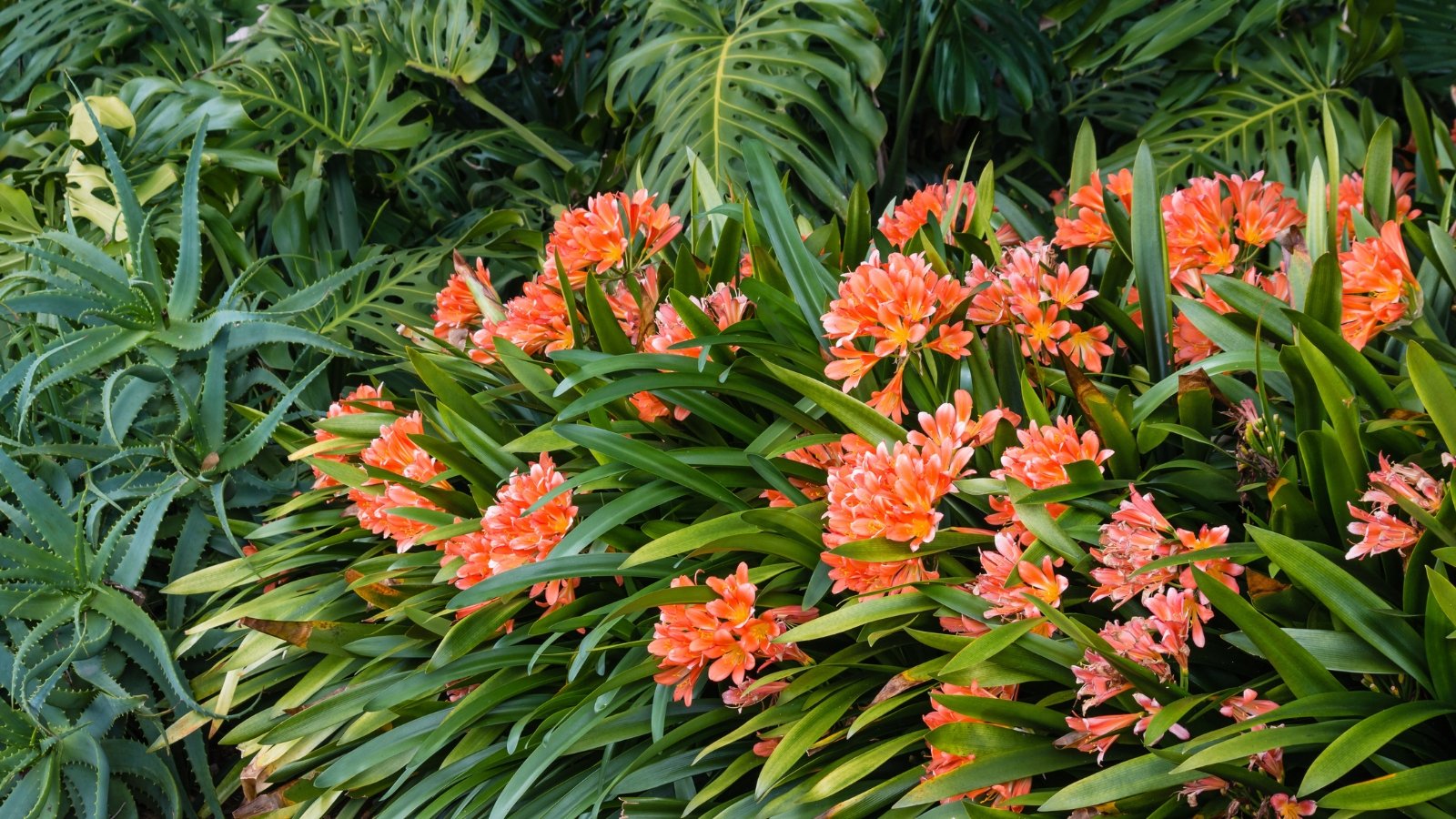 Plant rhizomes six to twelve inches apart; mature plants bloom sooner than seedlings, which take years.
Plant rhizomes six to twelve inches apart; mature plants bloom sooner than seedlings, which take years.Plant your rhizomes six to 12 inches apart with about one inch of soil covering them. Seedlings will not flower for about three years, but if you purchase already mature specimens, they can bloom in the first year. In containers, plant them with the same amount of space, or more, as they will multiply.
Growing from Seed
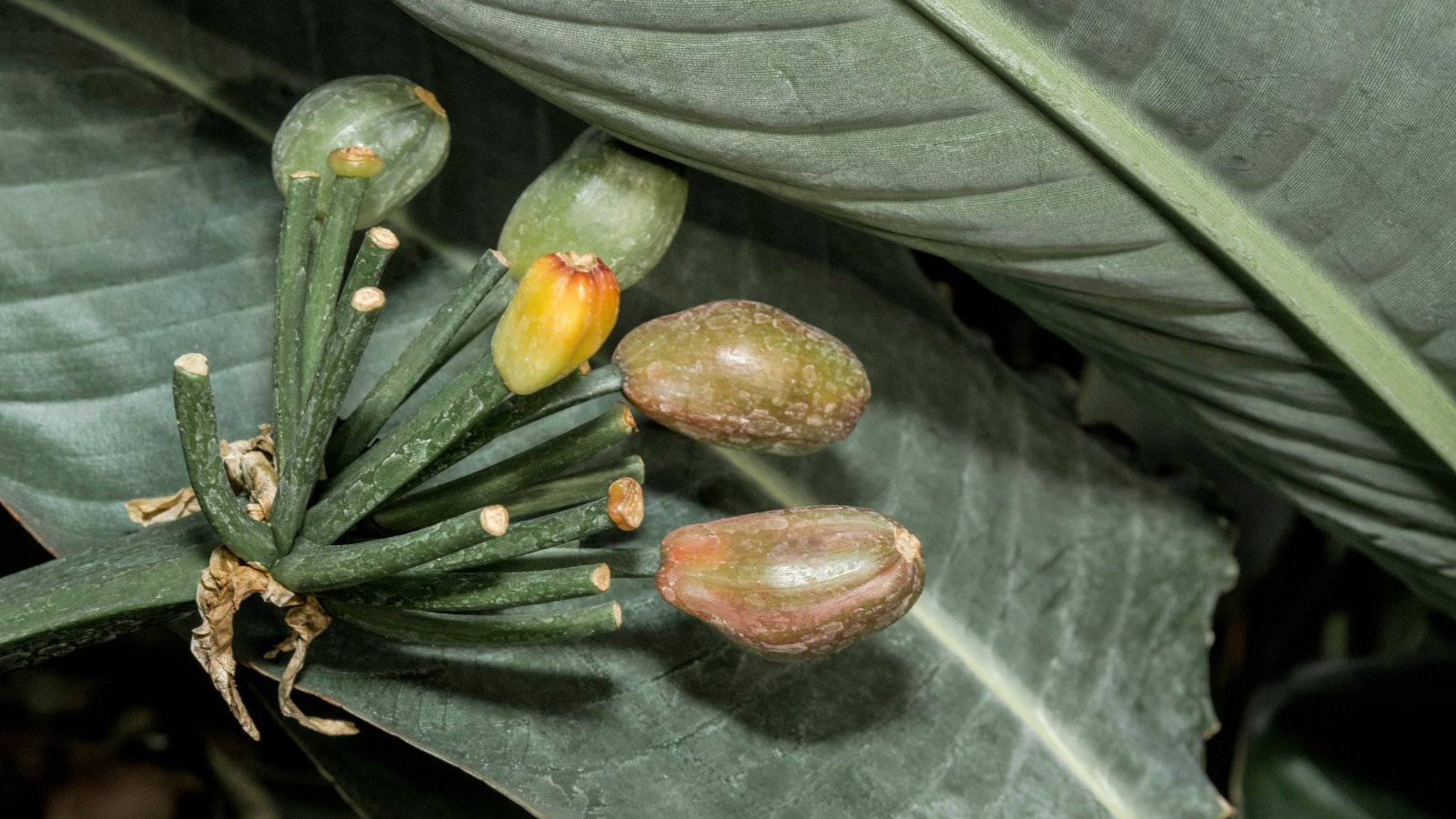 Harvest ripe fruits, dry the seeds, soak them before planting, and sow them in moist seed trays or cells.
Harvest ripe fruits, dry the seeds, soak them before planting, and sow them in moist seed trays or cells.Planting from roots is more common than from seeds, but you can do it. Seeds take longer to bloom, and you won’t see flowers for three to five years. You can purchase seeds or harvest them on your own from a healthy plant.
To harvest seeds, allow the fruit to ripen and mature on the plant. After you harvest, allow them to dry completely and store them in a cool, dark place. When you’re ready to plant, these seeds benefit from soaking. Don’t overdo it. Just soak them for a few hours to speed up the germination process. Sow them in a seed tray or cells with potting mix or seed starting mix, and keep them moist but not soggy.
Keep your seeds and seedlings moist, preventing them from becoming soggy or drying out. Let them grow strong before you attempt to transplant them. Keep them in bright but indirect light throughout the process.
How to Grow
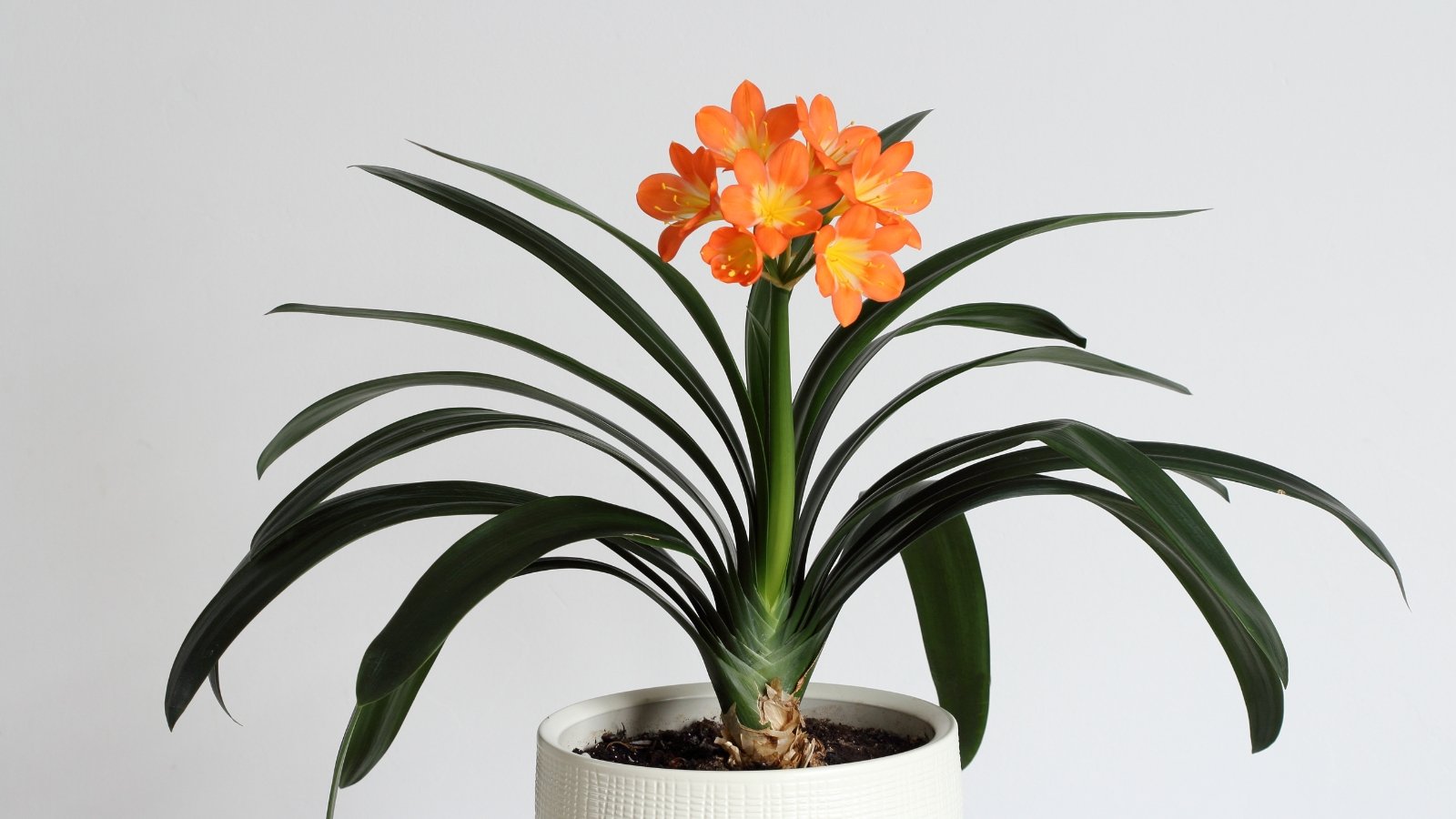 Clivias are easygoing plants, thriving with minimal care, few pests, and excellent nutrient efficiency.
Clivias are easygoing plants, thriving with minimal care, few pests, and excellent nutrient efficiency.Clivias are not difficult to grow, and as long as they have the right conditions, they don’t require much attention at all. They use nutrients efficiently and have no serious pest or disease issues. They are sturdy and adapt well to their environment.
Light
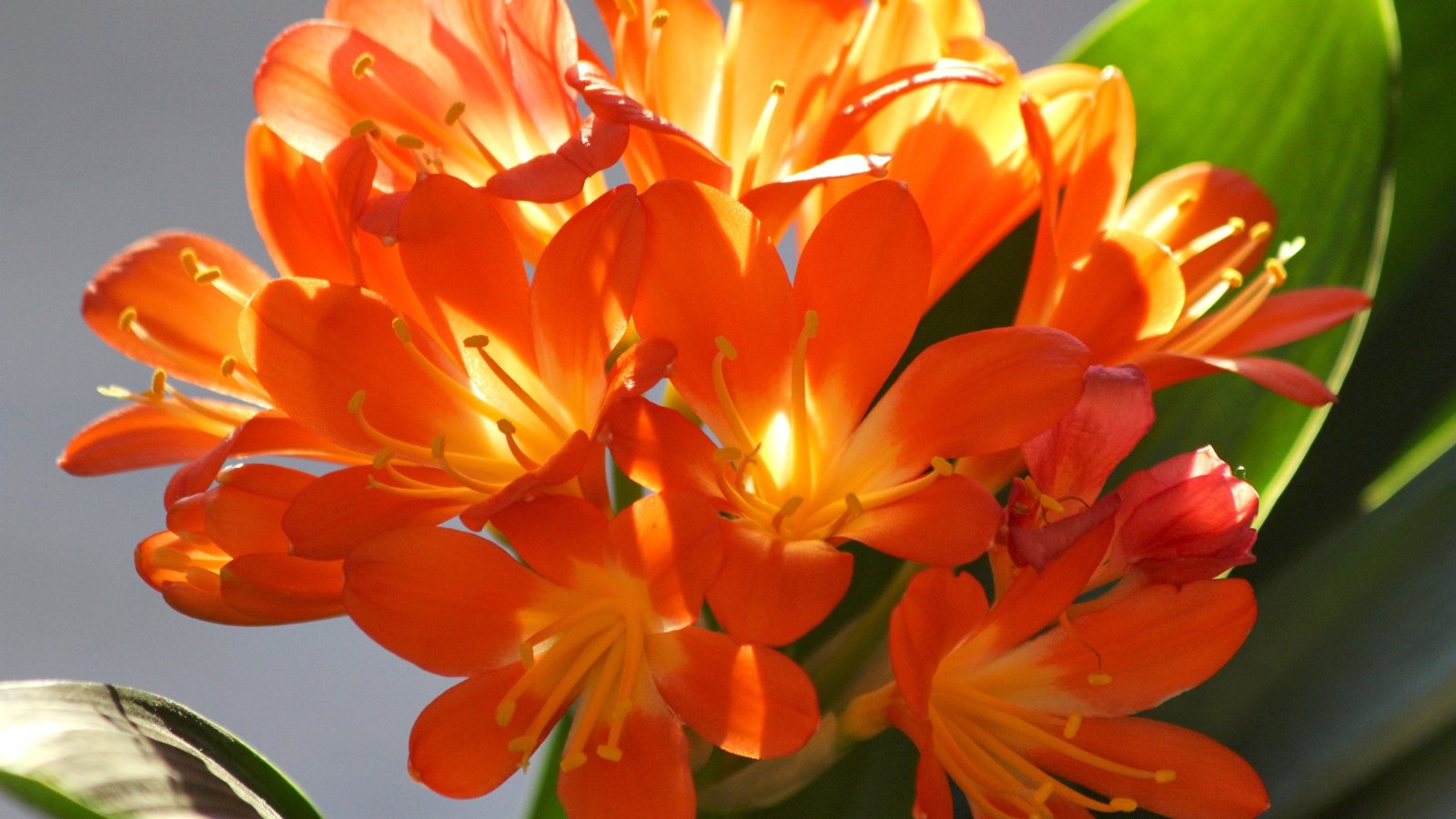 Clivias prefer bright indirect light; direct sun can scorch leaves, while deep shade limits flowering.
Clivias prefer bright indirect light; direct sun can scorch leaves, while deep shade limits flowering.These tropical understory plants do not like direct sunlight. They grow best in a space with bright but indirect light for most of the day. Dappled light from a canopy overhead is ideal. Full shade is not conducive, so partial sun is better than none at all. Sun in the afternoon is likely to burn their leaves.
Water
 Clivias need well-drained soil and moderate watering to avoid root rot, especially in outdoor settings.
Clivias need well-drained soil and moderate watering to avoid root rot, especially in outdoor settings.Location and exposure will dictate the amount of water your clivia needs. Their roots are susceptible to rotting, so it’s important to plant them in a location with proper drainage and not overwater. Outdoors, they prefer lightly moist soil.
As a houseplant, allow the soil to dry on top between waterings. It is better to underwater than overwater, as is the case with most houseplants. Water your houseplant about once every eight days. As potted outdoor plants, they will need water more frequently. Outdoor potted plants dry out faster, so you may need to water every three days, particularly when it’s hot outside.
Soil
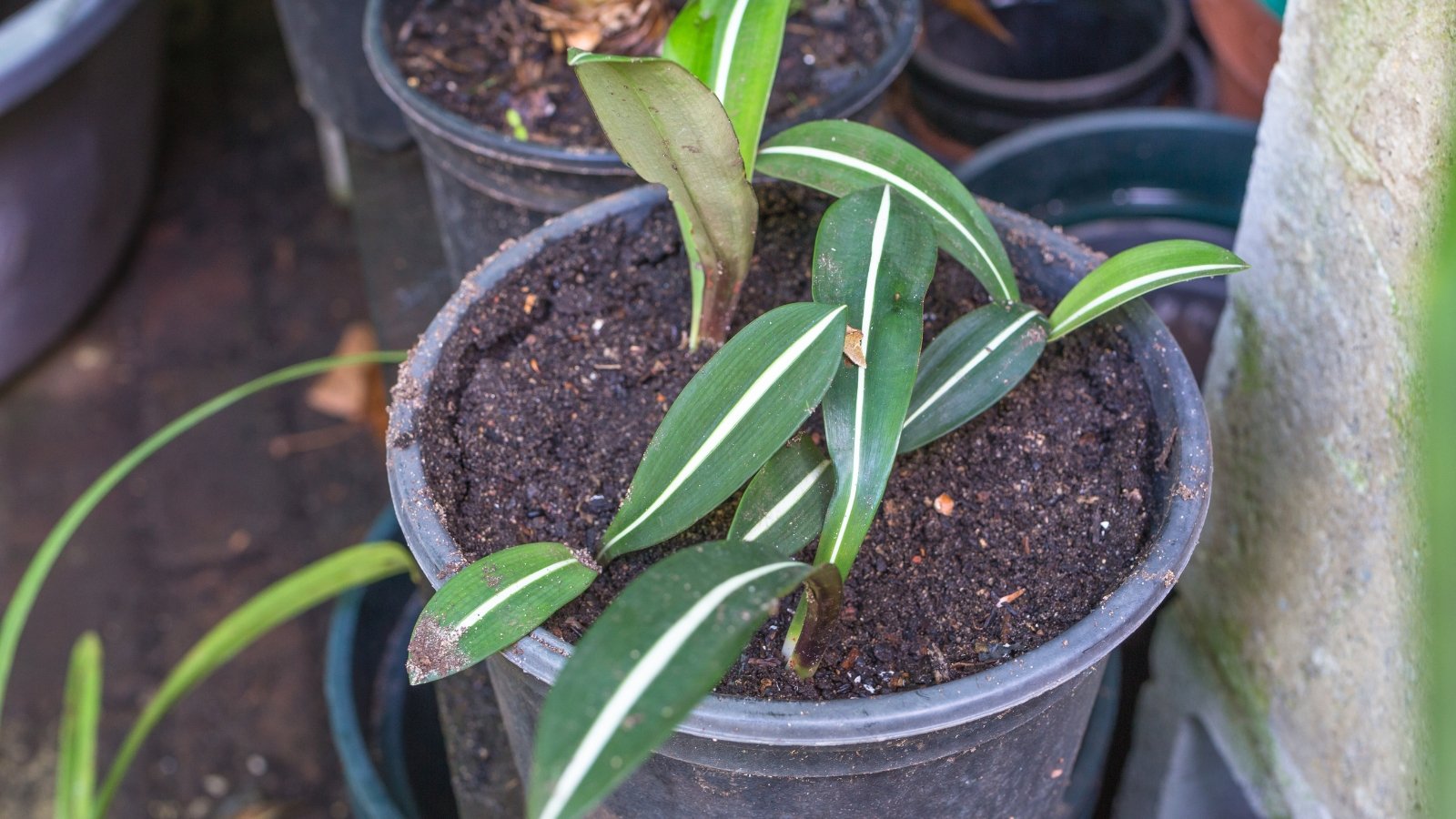 Use nutrient-rich, slightly acidic soil with compost or organic matter to help clivias thrive anywhere.
Use nutrient-rich, slightly acidic soil with compost or organic matter to help clivias thrive anywhere.Drainage is vital to keeping your clivia healthy. If your soil or container doesn’t drain properly, you’re setting yourself up for root rot. If needed, add some coco coir, perlite, or coarse sand to improve drainage.
They like rich soil, so mix some compost with regular potting or garden soil. Make sure to amend sandy soil with plenty of organic matter. They prefer slightly acidic soil, so organic matter is a good amendment, no matter the location.
Temperature and Humidity
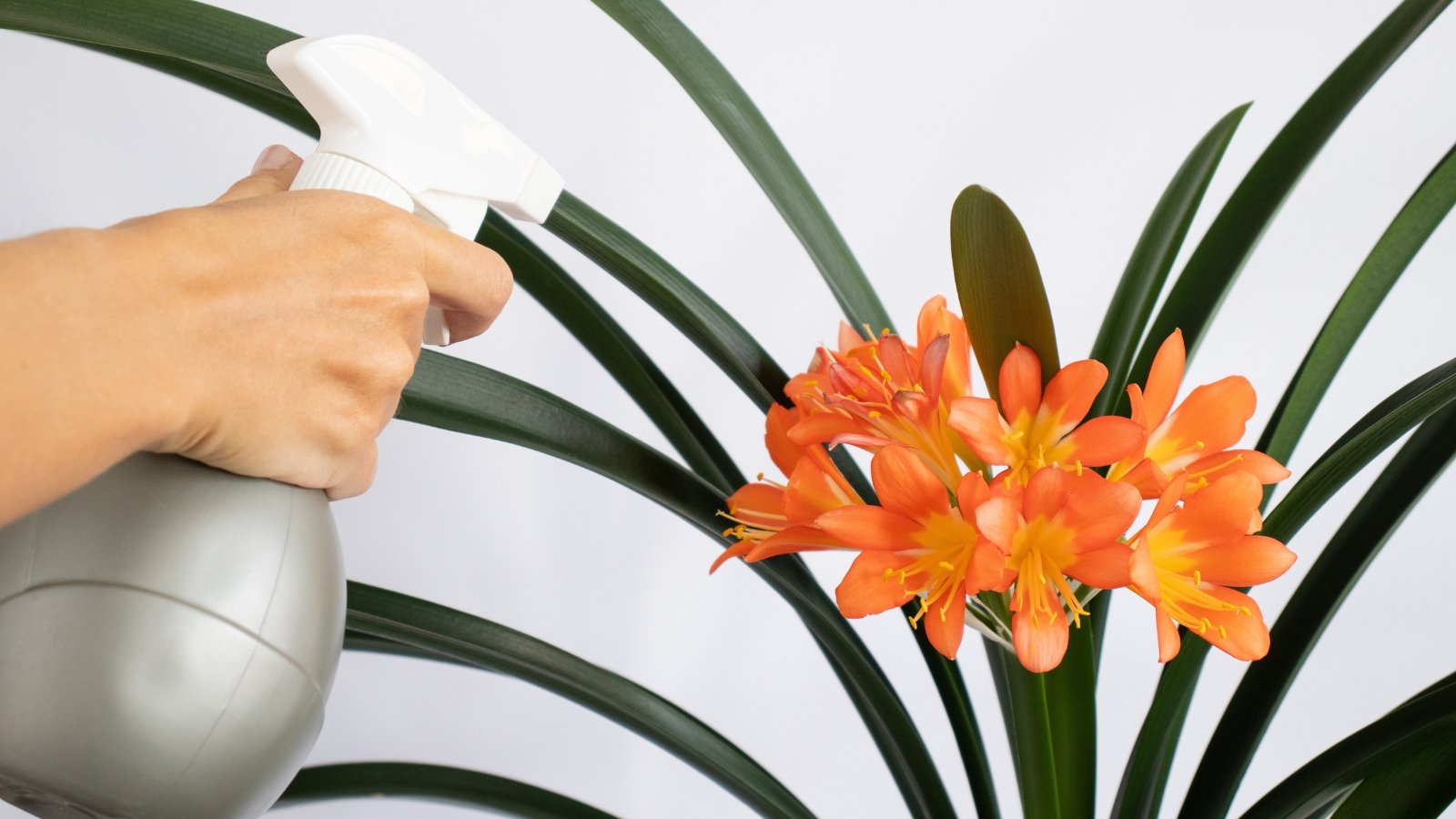 Clivias prefer 70-75°F days with moderate humidity, mimicking tropical conditions similar to indoor orchids.
Clivias prefer 70-75°F days with moderate humidity, mimicking tropical conditions similar to indoor orchids.
Temperate weather is ideal for your clivias. They thrive in the range of 70-75°F (21-24°C) during the day and about ten degrees cooler at night. This is another factor in making them great houseplants.
In order to flower, they need a perceptible shift to cooler weather for about a month. For indoor plants, you can place them outside in the fall when average temperatures reach 40-50°F (4-10°C). Make sure they aren’t exposed to frost, as this will kill the foliage.
These are tropical, so they are accustomed to moderately humid weather in their natural environment. Indoors they need similar conditions to most orchids. They will need at least 40-50% humidity, so a humidifier or pebble tray may be in order for indoor specimens.
Fertilizing
 Clivias need little fertilizer but appreciate fresh soil annually and occasional bloom booster in late winter.
Clivias need little fertilizer but appreciate fresh soil annually and occasional bloom booster in late winter.Clivias don’t need much fertilizer as long as the soil is nutrient-rich. Repot once yearly in fresh soil to ensure a sufficient supply of nutrients. A bit of bloom-boosting fertilizer in late winter may help with a better bloom, but it’s not usually necessary.
For outdoor plants, a bloom-boosting fertilizer with higher potassium will help in the spring. Apply once more in mid-summer, but dilute the fertilizer to half-strength.

Maintenance
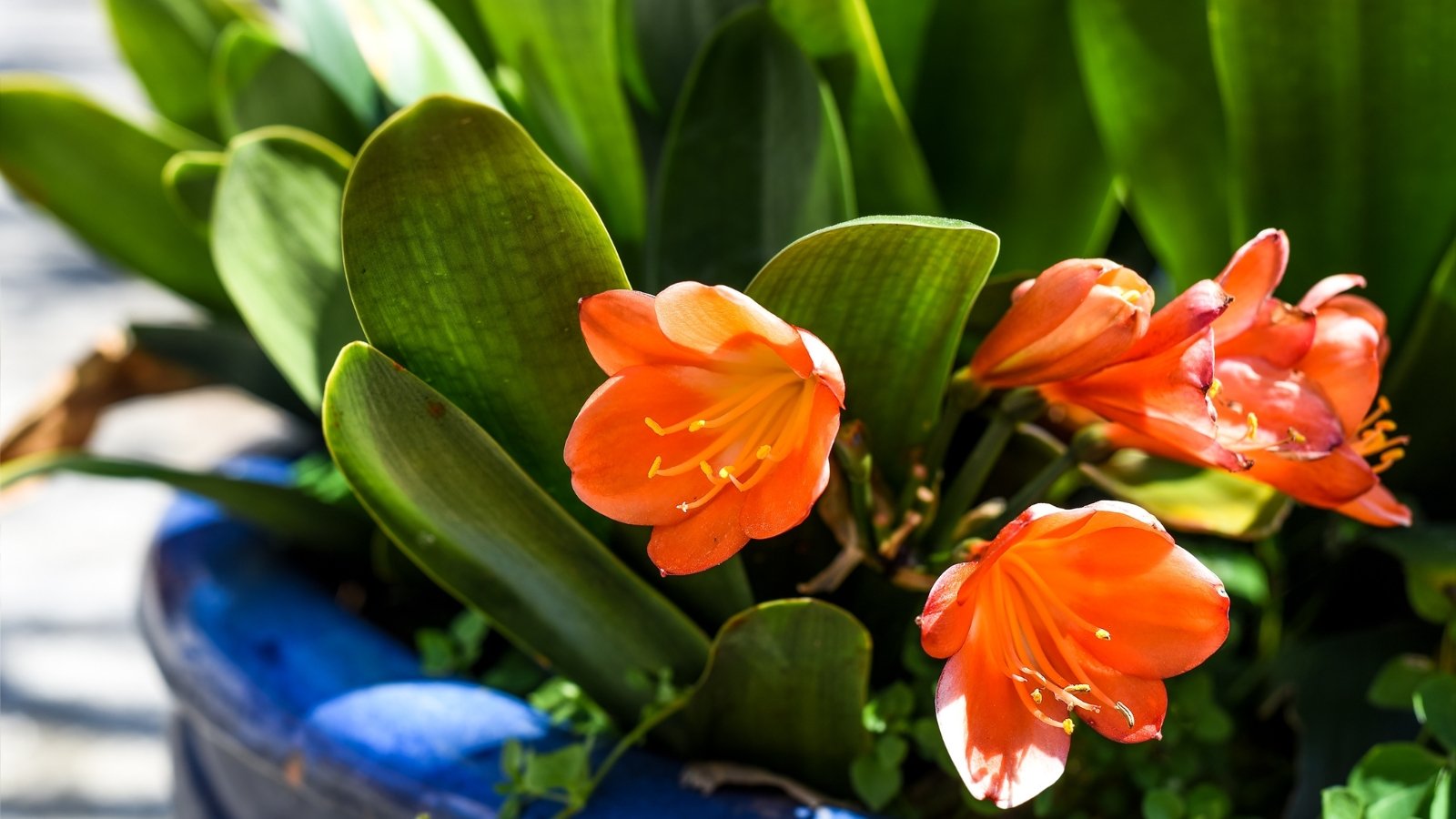 Re-pot clivias yearly, reduce winter watering, deadhead flowers, and trim stalks to encourage new offsets.
Re-pot clivias yearly, reduce winter watering, deadhead flowers, and trim stalks to encourage new offsets.Re-potting once yearly is a good way to keep your clivias healthy. This will prevent compacted soil and give them a fresh supply of nutrients. Reduce watering in the winter while the plant is dormant to avoid root and crown rot.
Make sure to deadhead, as those large, impressive blooms drain a lot of energy. Trim the spent flower stalks all the way to the lowest node. This redirects energy back into the roots so that the plant can produce those offsets.
Propagation
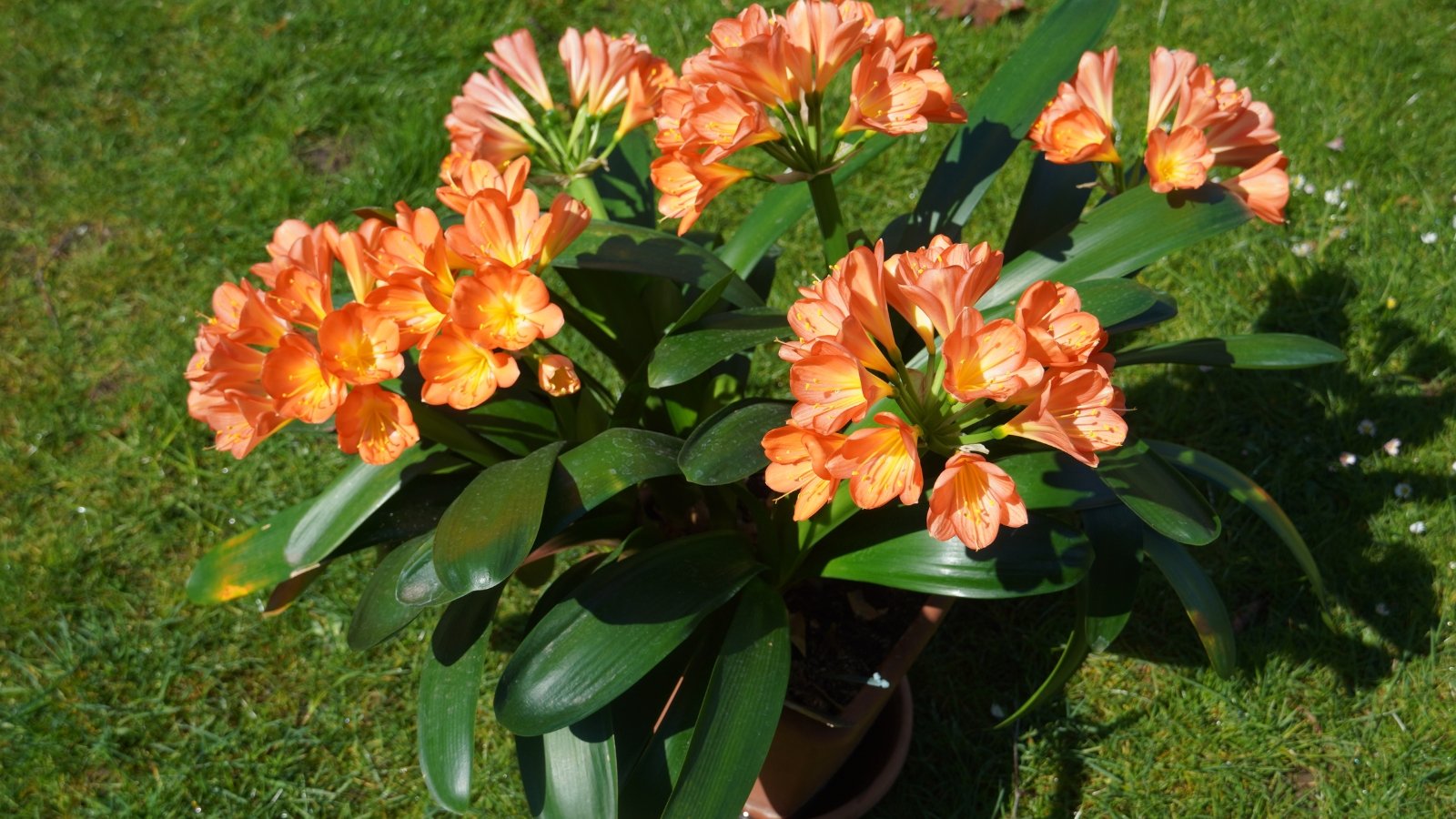 Clivias are usually propagated through offsets since seed propagation takes longer to produce blooming plants.
Clivias are usually propagated through offsets since seed propagation takes longer to produce blooming plants.It is possible to propagate these from seeds, but because of how long it takes for them to bloom, it’s uncommon. They are most commonly propagated through offsets, though division is also possible.
Offsets
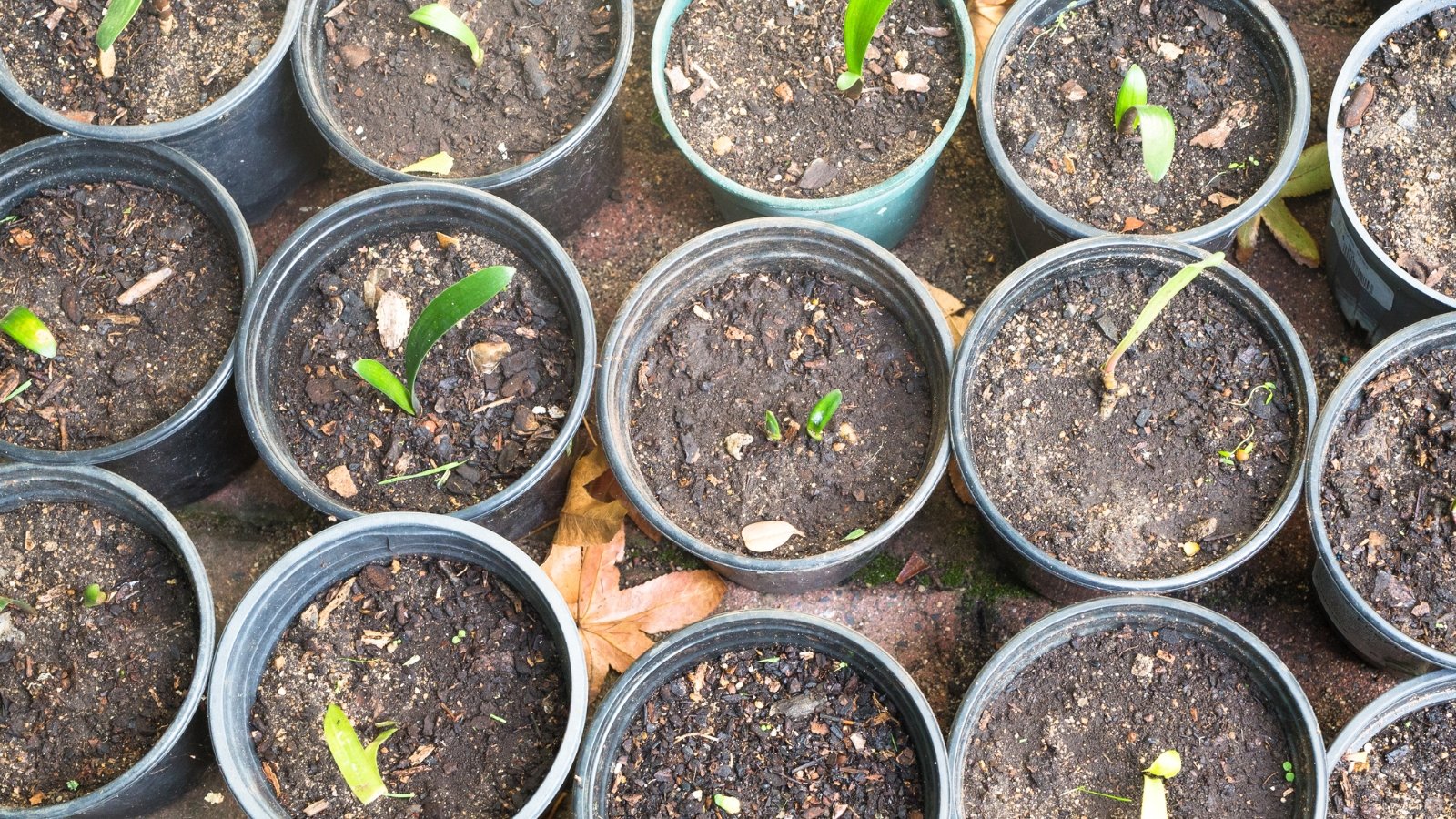 They form crowded colonies, so divide offsets in early fall to maintain healthy growth and space.
They form crowded colonies, so divide offsets in early fall to maintain healthy growth and space.Clivia plants produce offsets readily, so you can propagate via these offsets on a yearly basis. They are colony-forming, and in containers, they can easily grow crowded. Early fall is the ideal time to dig up those rhizomes and separate the offsets.
Fall is also a great time to re-pot, so you can do this all together. After removing the rhizome from the container and brushing off the old soil, locate the newer rhizomes and gently twist or cut them loose, retaining some root tissue with each one. Set them out for a day to cure, and then pot them separately.
Keep your new rhizomes moist but not soggy and in indirect light for several weeks. Don’t allow the soil to dry completely. It may take several weeks for leaves to sprout, so be patient with your young rhizomes.
Division
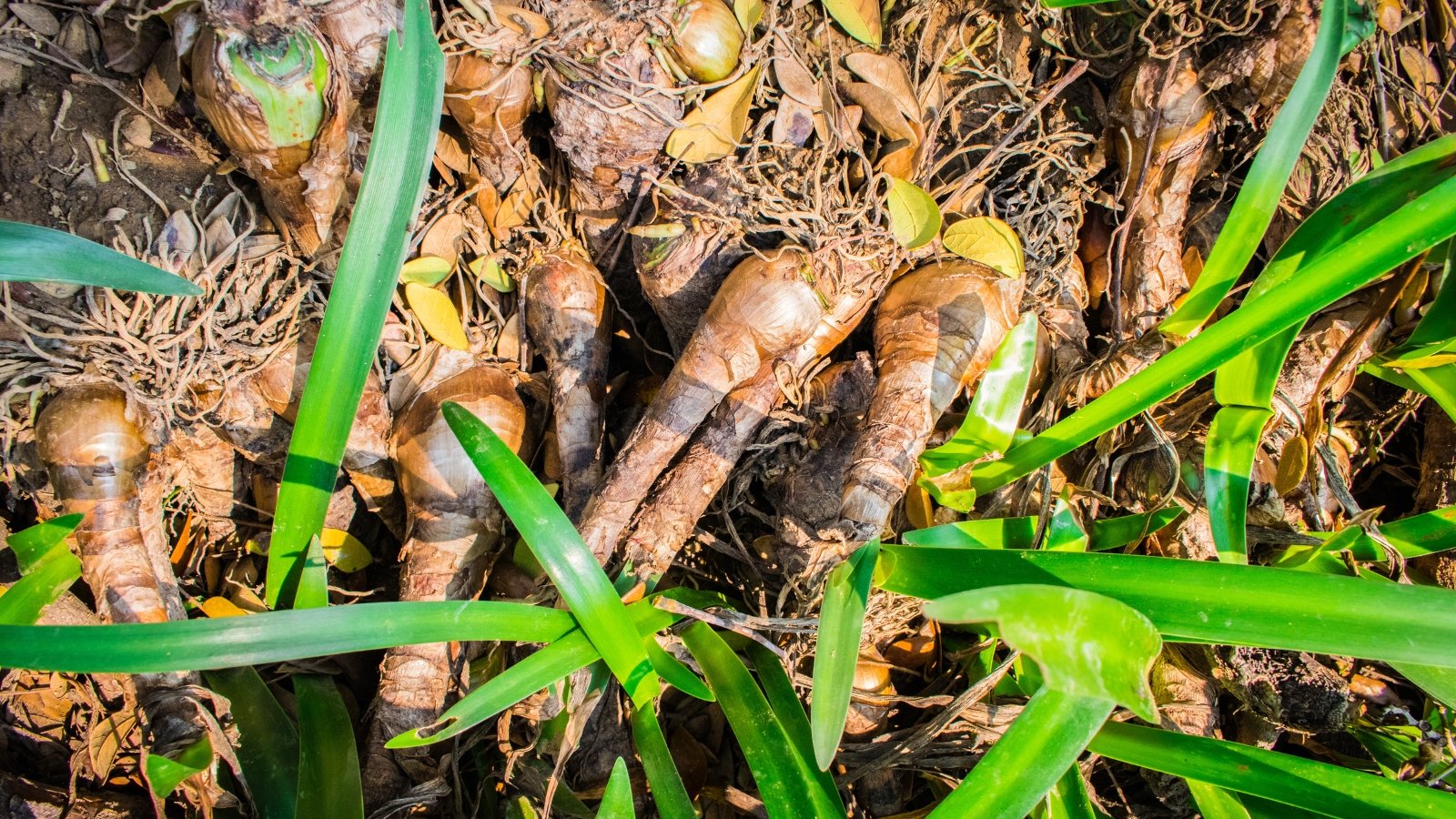 Cut rhizomes at growth points with sharp tools; plant in rich soil and avoid overwatering.
Cut rhizomes at growth points with sharp tools; plant in rich soil and avoid overwatering.Propagation by division is similar to propagation by offsets, but it doesn’t require waiting until the new offsets develop. In the spring, when they finish blooming, you can dig them up and separate the rhizome.
Identify growth points on the rhizome. This is where offsets will eventually form. Each division needs to have at least one of these growth points. Cut the rhizome into sections with a clean, sharp tool, and plant your cuttings in rich, well-drained soil. Be careful to avoid overwatering. These cuttings will be extra susceptible to root rot.
Common Problems
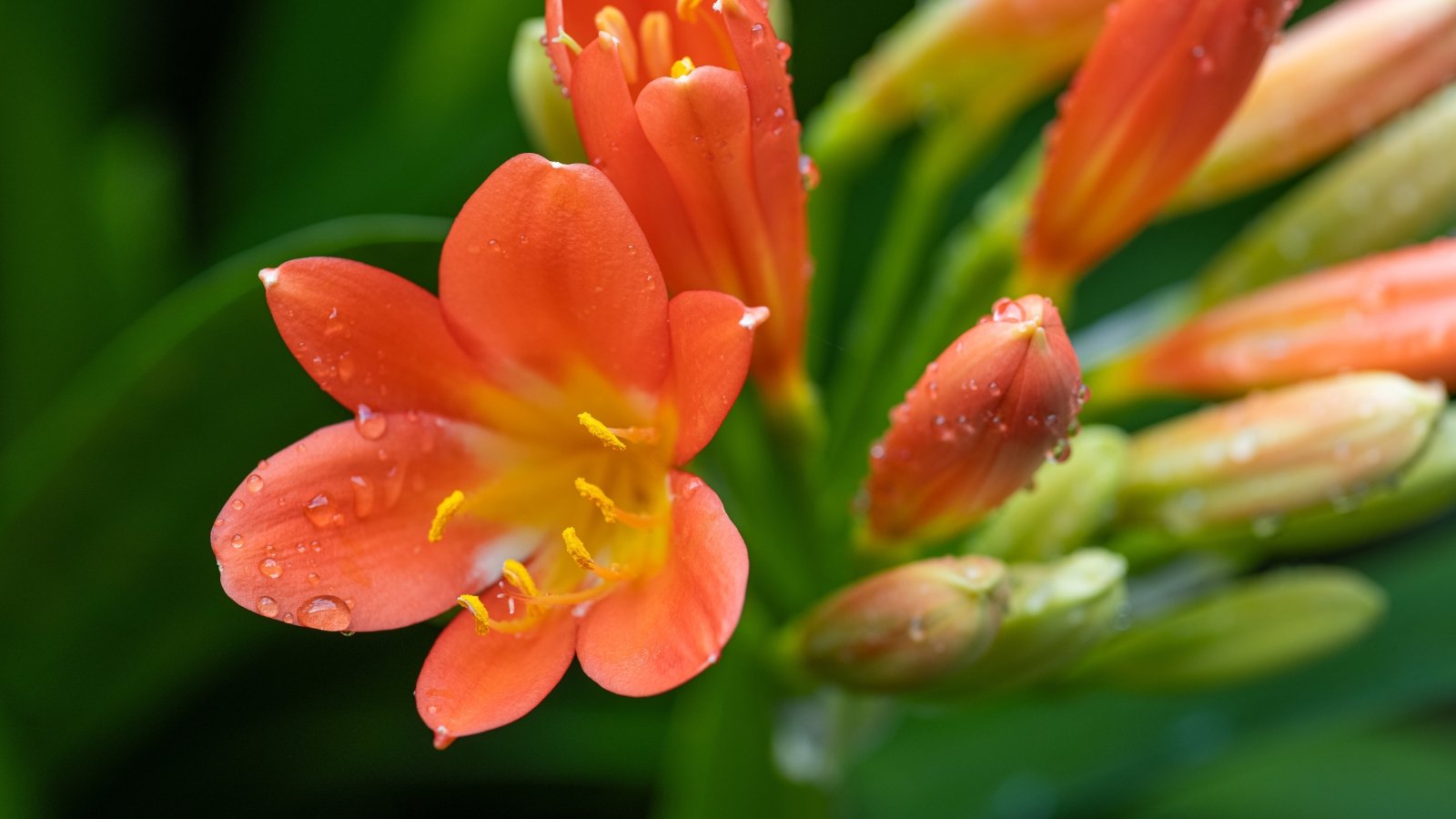 Clivias are mostly pest-free but watch for occasional issues that may require manual or chemical treatment.
Clivias are mostly pest-free but watch for occasional issues that may require manual or chemical treatment.Clivias rarely encounter issues with pests and diseases, but there are a couple of issues to look out for.
Pests
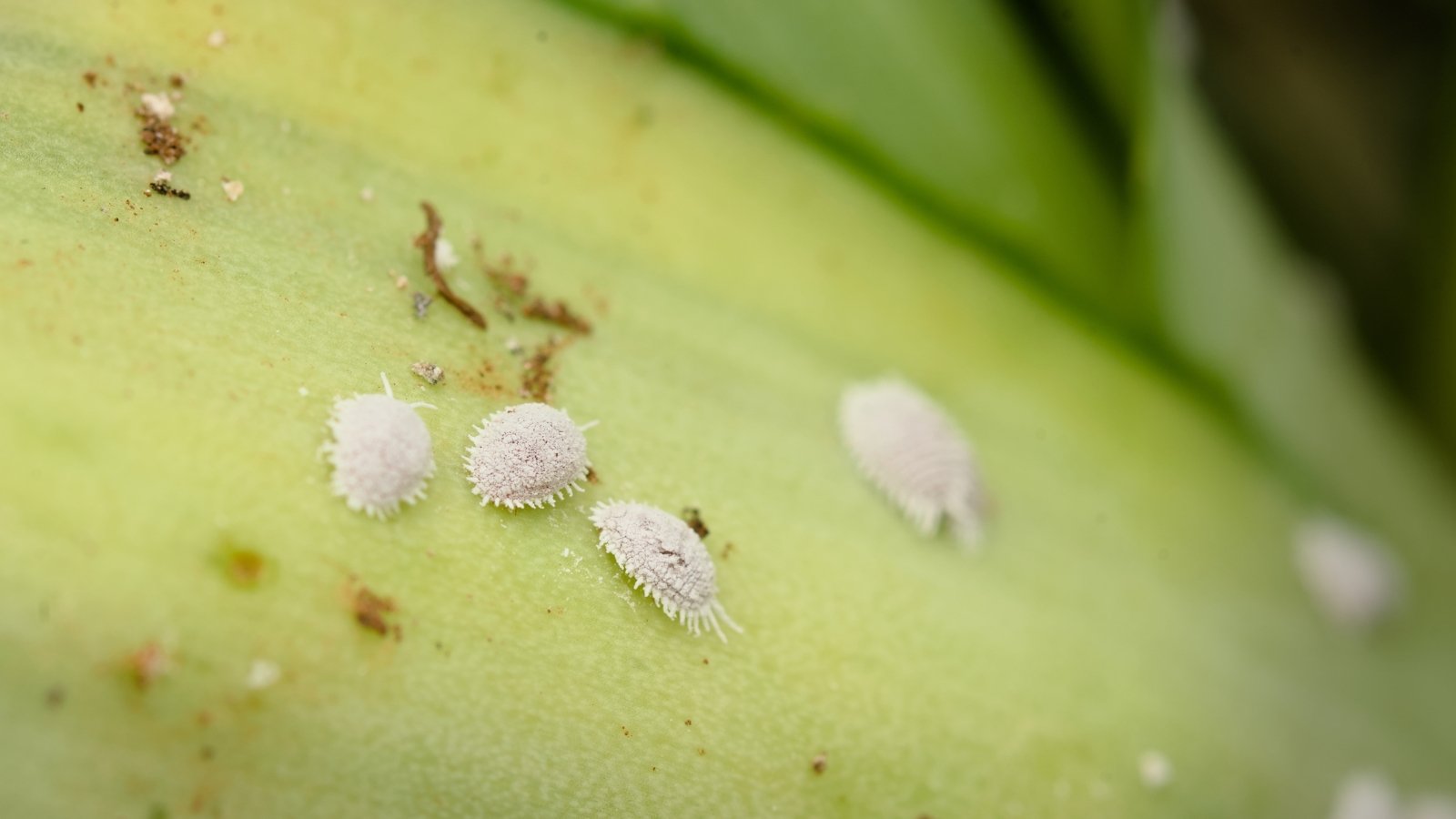 Remove mealybugs with alcohol-soaked swabs or horticultural oil to protect clivias from moisture and nutrient loss.
Remove mealybugs with alcohol-soaked swabs or horticultural oil to protect clivias from moisture and nutrient loss.Scale insects and mealybugs are the most common pests to affect these plants. Scale insects are small and domed with a rounded back. They are slow-moving and usually show up on stems where they pierce the tissue and suck out the sweet sap.
Mealybugs are small and have a white or pink waxy coating that appears fuzzy. They are similar in the way they feed on their prey, and both can leave your clivia lacking in moisture and nutrients. You can remedy both by wiping them off with an alcohol-soaked cotton swab or with horticultural oil. Use 70% or less strength alcohol.
For houseplants, these usually come in on other plants, so the best prevention is to inspect new plants well before introducing them. Make sure to isolate any infected plants while you treat them to avoid spreading the pests.
Diseases
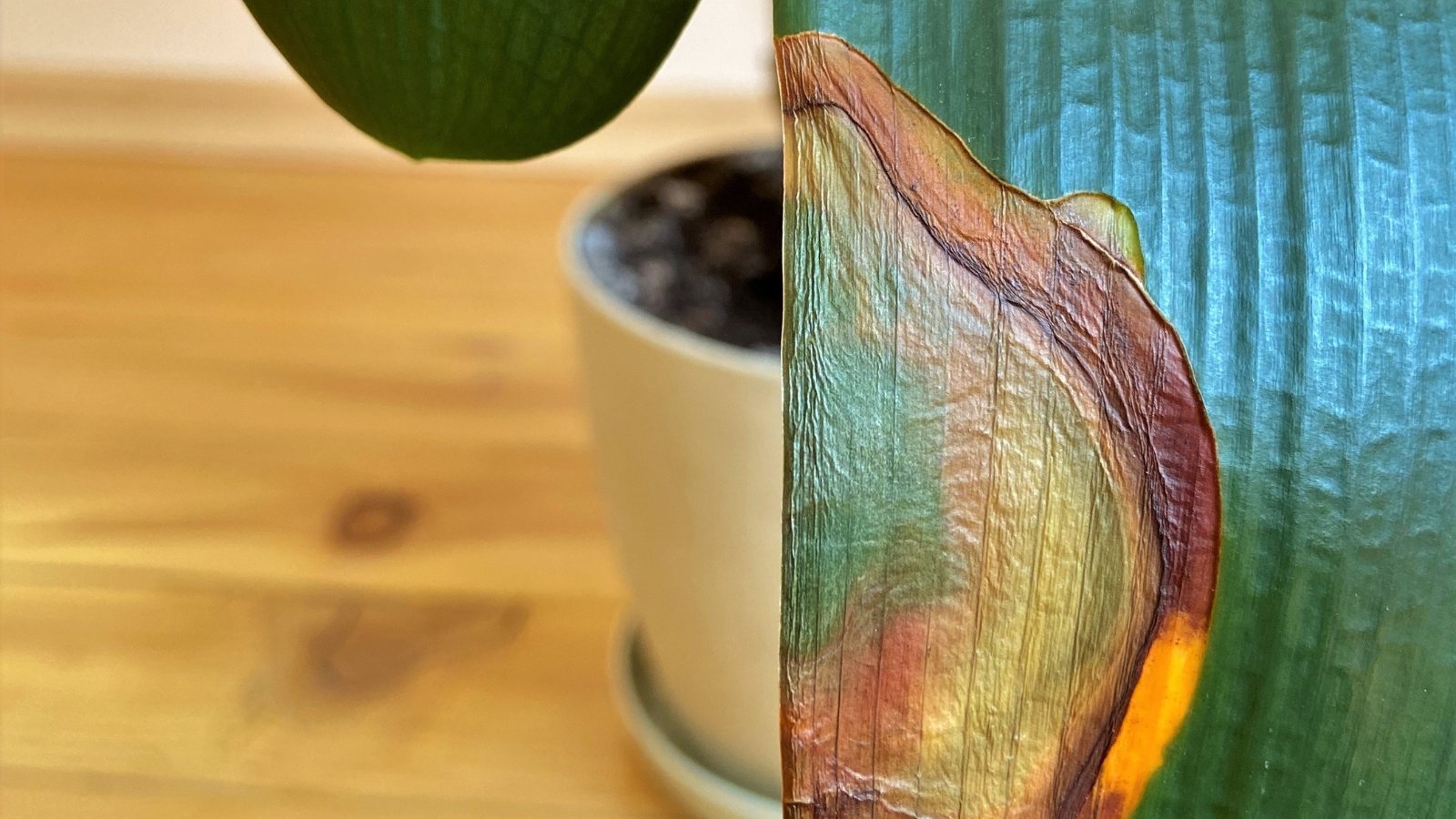 Treat rust on clivias by removing infected leaves and applying copper fungicide; discard badly infected bulbs.
Treat rust on clivias by removing infected leaves and applying copper fungicide; discard badly infected bulbs.Root and crown rot are the most common diseases of clivia plants. If the soil stays wet and has poor drainage, its root structure is prone to fungal disease. Organic material in the soil breaks down and decays in water, infecting the rhizome.
Repotting can remedy fungal issues in mild cases, but in advanced cases, there is usually nothing you can do. Dig up your rhizomes and identify healthy sections. Remove the rotted sections and repot the healthy ones in fresh soil, then water sparingly.
Rust can also appear on your clivia. This is a fungal disease that shows up as rusty spots on the foliage. Remove the affected foliage and treat it with a copper-based fungicide. Often, manual removal is sufficient. If you identify red splotches on bulbs, discard them.
Frequently Asked Questions
Other plants that prefer indirect light are good companions for these. Ferns, ginger, and begonias are all good neighbors.
No, as with other members of the amaryllis family, these are toxic to pets and people.
Indoors is best. They are not frost tolerant and even a light frost can damage the foliage.


 3 months ago
42
3 months ago
42





















 English (US) ·
English (US) ·  French (CA) ·
French (CA) ·